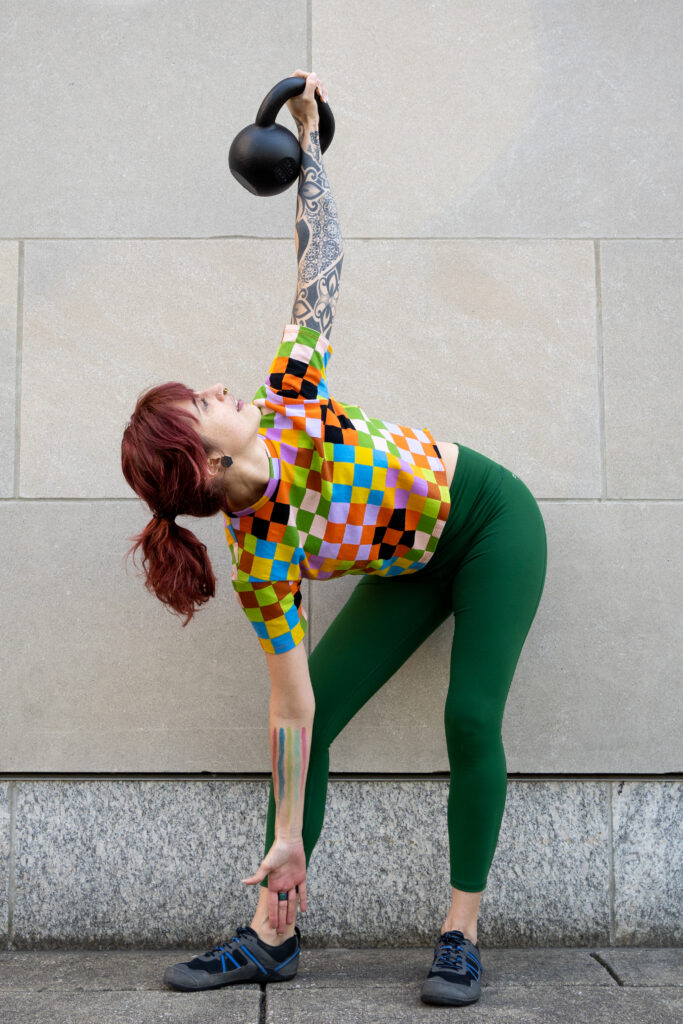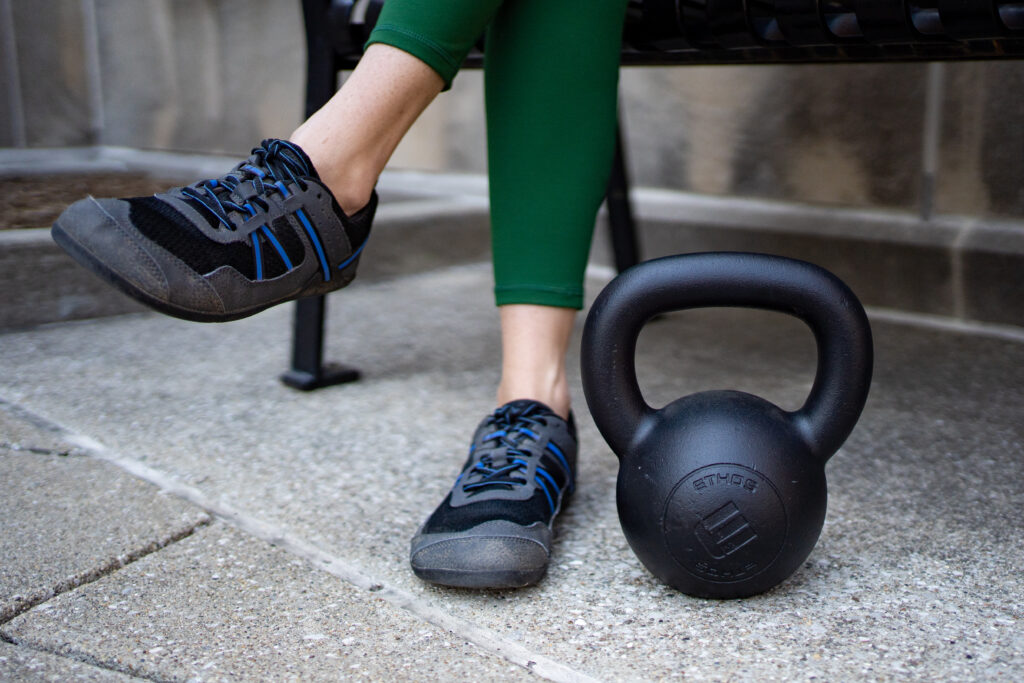I didn’t know anything about lifting weights before walking into a strength training class at my gym in 2015. Thanks to some amazing coaches, I learned everything I needed to know to go out and create my own strength training program. Now, I create programs for myself and my clients using the values instilled in me by my past coaches plus what I’ve learned since becoming a strength coach. These are my non-negotiables, things I add to all my strength training programs:
#1 A Good Warm Up
If I told you to get up and immediately start sprinting right now, would it feel good? Probably not. Your body needs to warm up before starting something more vigorous, such as sprinting or lifting heavy weights. Cool, so let’s do a few quick stretches then hop on the treadmill for a couple minutes, yea?
Not quite.
This doesn’t get it all wrong- it’s good to stretch your muscles a bit and get your heart rate up, but I like to be a little more intentional about my warm ups. Instead of a warm up, I started thinking about those first few minutes of my workout as activation time. I’m activating my muscles to prepare them for more work. It helps me be more intentional about which muscles I’m warming up and why.
This can include:
- Releasing/stretching muscles that are tight or that I’m having trouble with
- Doing targeted exercises for muscles I’m intentionally trying to strengthen
- Getting my core muscles warmed up (see #4)
- Warm up the muscles I’m about to use in my workout
- When this is a full-body workout, it’s usually a series of different mobility movements that get my entire body moving.
- Depending on my plan, this can also involve doing lighter reps of an exercise, such as doing bodyweight squats before I do squats with a barbell.
By this point you’re probably thinking “wow, this seems like it would take too much time…,” but as you put it into practice you find a rhythm and figure out which exercises can hit multiple activation steps. It only takes me a few minutes at the beginning of every workout, and my body moves so much better during workouts because of it.
#2 A Combo of Basic and Movement-Based Strength Exercises

Did you know there are three planes of motion? You can move forward and back (sagittal plane), side to side (frontal plane), and rotationally (transverse plane). Most of the basic strength exercises happen in that sagittal plane, only one of the planes of motion. Those exercises have a high level of stability there, giving you the opportunity to lift very heavy weights. But what’s often missed is the other side of the equation- doing exercises in the frontal and transverse planes that allow more movement but require lighter weights.
When I think about my day-to-day, I’m bending, reaching, twisting, and doing all sorts of other movements that don’t usually fit the form of those basic strength exercises. Movement-based exercises, on the other hand, match my daily movements better and help me build strength in unusual positions.
My strength training program has two critical sides: the basic strength exercises I do to help my muscles get as strong as possible, and those movement-based strength exercises that intentionally put my body in unusual positions. These movement-based exercises give my body a different type of strength, one that holds up when I bend to the side, reach behind me, or twist around.
There are two ways I usually combine these basic and movement-based exercises:
- I pair them together in a superset. I’ll do one basic exercise, then its movement-based version that uses similar muscles.
- Example: goblet squats + lateral lunges
- Example: bent over rows + lawnmower rows
- I do the heavier, basic exercises first, then I do the lighter, movement-based exercises at the end of my workout. One of my favorite exercises to do at the end of a workout is the Turkish get up.
#3 Using the Mind-Muscle Connection
When I go to the gym, I don’t just start flinging weights around. For every exercise I do, I connect my brain to the muscles I’m about to use before I even pick up a weight or start moving. I think about those muscles moving and engaging during the exercise and make sure my core stabilizing muscles are also engaged and ready to lift a weight.
Connecting my brain to my muscles helps me move intentionally and get the most out of every single rep. When I teach this to my clients, they usually tell me that exercises start to feel a little more challenging, and therefore more effective at getting them stronger. They begin thinking about staying connected at every single point of the exercise, from picking the weight up, doing the reps, and putting it back down again.
One of the top reasons people get injured during strength training is because they’re not taking advantage of the mind-muscle connection. Intentionally setting up for an exercise and staying present for every single rep is how you make sure all your muscles are ready for the weight you’re using, even if it’s a weight you feel confident with. The mind-muscle connection only gets more important as you use heavier weights and do more movement-based exercises.
Next time you go to pick anything up (it doesn’t have to be exercise equipment), think about what you’re about to do and what muscles you’re about to move. Flex those muscles before you even start moving, then pick it up. Does it feel different this time?
#4 Every Exercise is a Core Exercise
Your core isn’t solely about your abs. It’s made up of all the muscles that run through and around your torso to help keep you upright. The core is the connection between your upper and lower body and stabilizes your pelvis and spine. Sounds pretty important, right?
The importance of the core is why every exercise in my strength training program is a core exercise too. No matter what body part I’m moving, I’m using my core to stabilize and connect my whole body. By doing so, I’m also giving the part that’s moving more power. This goes back to #3 and being intentional about my movements. For example, when I do an overhead press, of course I can do it by only thinking about my shoulder and arm. But when I think about how my feet are placed on the floor, engaging my legs, and using my core muscles to stabilize my body, all of a sudden that press gets way more powerful. In my world, every exercise is a full-body exercise.
To do this, I think about breathing into and bracing all the muscles in my core for maximum stability, even if my torso is moving. Try it! First, I want you to breathe so that you’re pushing your stomach out. Now, instead of your stomach pushing out, think about that same breath going to every single part of your torso. When I breathe in like this, I feel that breath going into my sides and back as well as the front. With a little practice, you’ll be able to hold that feeling without actually holding your breath (no passing out, okay?). I do this before every exercise, whether I’m using a heavy weight or just my body.
#5 Kettlebell Exercises
My final non-negotiable is kettlebell exercises. Why kettlebells specifically? Because I love using them! It’s important to me that my strength training program is filled with exercises I enjoy doing. Once I started using kettlebells more, I found I pretty much always gravitate towards them in the gym (it’s also one of the least-busy gym areas!). I have a lot of fun doing kettlebell-specific exercises like swings, cleans, and snatches. Exercises using kettlebells also tend to be in line with my training goals and movement-based strength training.

article photography by Katie VanKlaveren
The more you train, the more you’ll find what types of exercises or equipment you gravitate towards. Make sure you keep those in your program! The more you enjoy what you’re doing, the easier it will be to stick to a workout plan long term.
Of these non-negotiables, you’ll find #1-4 in every program I create for myself or my clients. The list deviates at #5 because kettlebells are what make me happy. When I’m programming for clients, I want to include what makes them happy and helps them reach their goals. Their program may or may not include kettlebells depending on what equipment they have access to.
Now it’s your turn to make a list. What are your fitness non-negotiables?
Sarah Siertle
Hey! I'm Sarah!
I'm an inclusive strength & movement coach who helps people get hella strong so they can have fun and live their lives in full color!
My coaching is beginner-friendly, movement-based, and size-inclusive. I believe in coaching that is kind, not shaming or judgmental as so many fitness experiences are.
If you're ready to start your strength journey, you can check out your training options or get started with a free workout!
Comments